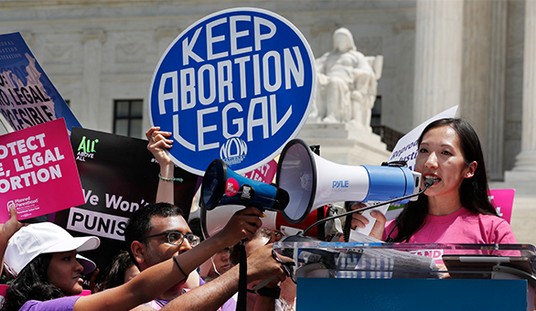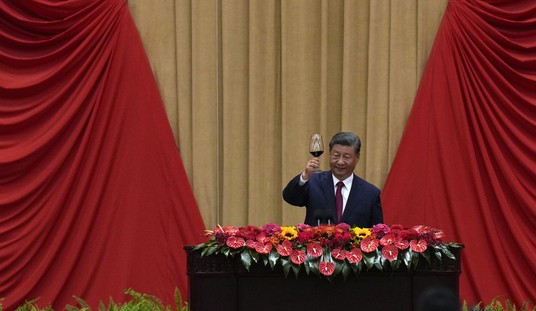
Trader Gregory Rowe, center, works on the floor of the New York Stock Exchange, Thursday, Nov. 29, 2018. U.S. stocks are lower Thursday morning after huge gains the day before. (AP Photo/Richard Drew)
President Trump is “very happy” with the Federal Reserve’s decision to cut the federal fund rates to near zero percent and to implement a $700 billion quantitative easing program in response to the coronavirus crisis.
The federal funds rate is the interest rate at which “depository institutions (banks and credit unions) lend reserve balances to other depository institutions overnight on an uncollateralized basis.”
The new target range for the federal funds rate has been lowered by one full percentage point to zero to .25 percent. This move comes shortly after the Federal Reserve cut the rate by .50 percent.
Trump told reporters, “It’s a big step, I am very happy they did it. It brings us in line with other countries. There are a lot of people on Wall Street that are very happy.”
The last time we saw interest rates this low was during the 2008 financial crisis. Rates are expected to remain at this level until the current shock to the economy is over. The Fed’s statement said rates will stay low “until it is confident that the economy has weathered recent events and is on track to achieve its maximum employment and price stability goals.”
Quantitative easing means that the Fed goes into the open market to buy securities (usually government securities). This injects cash into the economy. In this case, the Fed will buy $500 billion dollars worth of Treasury securities and $200 billion worth of mortgage backed securities.
In addition to the reduction in the federal funds rate and the quantitative easing program, CNBC reports that, “In a global coordinated move by centrals banks, the Fed said the Bank of Canada, the Bank of England, the Bank of Japan, the European Central Bank, the Federal Reserve, and the Swiss National Bank took action to enhance dollar liquidity around the world through existing dollar swap arrangements.”
Dow futures dropped sharply after this announcement, falling by 1,000 points.
The Fed issued three statements on Sunday afternoon to explain the latest action.
The first, Federal Reserve issues FOMC statement, explains why they took this step. The full statement can be viewed here.
The coronavirus outbreak has harmed communities and disrupted economic activity in many countries, including the United States. Global financial conditions have also been significantly affected. Available economic data show that the U.S. economy came into this challenging period on a strong footing. Information received since the Federal Open Market Committee met in January indicates that the labor market remained strong through February and economic activity rose at a moderate rate. Job gains have been solid, on average, in recent months, and the unemployment rate has remained low. Although household spending rose at a moderate pace, business fixed investment and exports remained weak. More recently, the energy sector has come under stress. On a 12‑month basis, overall inflation and inflation for items other than food and energy are running below 2 percent. Market-based measures of inflation compensation have declined; survey-based measures of longer-term inflation expectations are little changed.
Consistent with its statutory mandate, the Committee seeks to foster maximum employment and price stability. The effects of the coronavirus will weigh on economic activity in the near term and pose risks to the economic outlook. In light of these developments, the Committee decided to lower the target range for the federal funds rate to 0 to 1/4 percent. The Committee expects to maintain this target range until it is confident that the economy has weathered recent events and is on track to achieve its maximum employment and price stability goals. This action will help support economic activity, strong labor market conditions, and inflation returning to the Committee’s symmetric 2 percent objective.
The second, Coordinated Central Bank Action to Enhance the Provision of U.S. Dollar Liquidity, can be viewed here.
The last, Federal Reserve Actions to Support the Flow of Credit to Households and Businesses, can be viewed here.
It’s not unusual for the Fed to make changes in the fed funds rate. It is unusual, however, for the Fed to launch quantitative easing. It’s seen as a “last resort.”













Join the conversation as a VIP Member